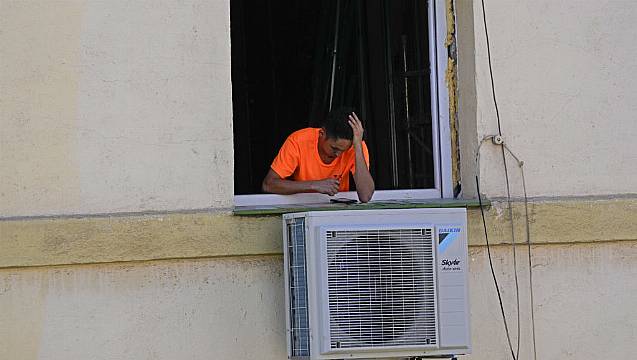Spain is sweltering in summertime temperatures – with highs of 38 degrees centigrade in the southern Guadalquivir Valley – the country’s national weather service said.
Health officials are considering bringing in a heat prevention plan two weeks early to help regions respond to the unseasonably warm weather’s effects.
The State Meteorological Agency said temperatures are “exceptionally high” for April because of a mass of very warm and dry air coming from North Africa.
With a long weekend coming up, beaches are packed along the coast.

But residents who could not get away from Spain’s inland capital, Madrid, are less lucky.
Loli Gutierrez, 70, said she is worried about what conditions will be like when summer comes.
“This is already unbearable,” she said.
“We are only in April. If this happening in April, how is it going to be June?”
Last year was Spain’s hottest since record-keeping started in 1961, and also the country’s sixth driest despite the presence of weather phenomenon La Nina, which slightly dampened global average temperatures.

The Spanish government has requested emergency funds from the European Union to support farmers amid extreme drought conditions in the country’s agricultural heartlands, including the Guadalquivir Valley.
The world’s biggest exporter of olive oil, Spain is also an important producer of fruits and vegetables for the European market.
The drought has already driven up prices of Spanish olive oil to record levels.
Currently, 27% of Spanish territory is classified as in a drought “emergency” or “alert”, according to the Ecological Transition Ministry, and water reserves are at 50% of capacity nationally.







